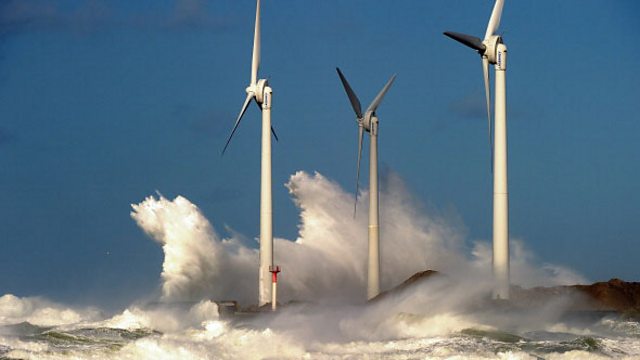
Windfarms, Twins and pain, Wearable computers
New climate modelling suggests offshore wind turbines could slow down hurricanes, twins can feel pain differently, Google glasses and other wearable computers
Offshore Wind Farms Could Stop Hurricanes
Around 10% of the UK’s energy demand is met by wind turbines. The UK is home to the world’s largest offshore wind farms – with the biggest of all being the London Array, in the Thames estuary, with 175 turbines. These generating stations at sea are a relatively new idea, but one that is catching on. Putting turbines offshore exposes them to higher wind speeds, and removes many of the objections they sometimes face on land. But they could do far more than just generate power, according to new research. They could also suck enough energy out of a storm that they could weaken or even negate hurricanes before they hit the shore, protecting coastal populations. Mark Jacobson, Professor of Civil and Environmental Engineering at Stanford University, is one of the researchers behind this proposal.
Twins and pain
Identical twins have been found to feel pain differently by researchers. These twins are generally genetically identical, and so it seems likely that environmental factors are causing their different perceptions of pain. And in fact, it seems that the different environmental conditions that the twins have been exposed to have, in turn, caused differences in the way the twins’ identical genes are working: a system called our epigenome. Marnie Chesterton speaks to study author Professor Tim Spector from Kings College London to find out more. Could the way we live affect the pain we feel?
Wearable computers
Technology allows us to wear prescription glasses and put on wrist watches. Without giving these devices much thought, once they are on, we are hardly aware of them. The same philosophy underpins today's advanced wearable technologies.
Gareth Mitchell talks to the people behind the evolution of wearable technologies such as Google Glass, life-logging cameras and clothes that respond to our emotions.
These devices suggest a future where you will not have to disrupt social interactions with invasive technology (such as a hand-held mobile phone) because you will have ambient awareness of your surroundings.
Photo Credits: Philippe Huguen/AFP/Getty Images
Last on
Chapters
-
Offshore Wind Farms Could Stop Hurricanes
New climate modelling suggests offshore wind turbines could slow down hurricanes
Duration: 07:07
Twins and pain
Identical twins have been found to feel pain differently by researchers
Duration: 06:39
Wearable computers
Google glasses and other wearable computers
Duration: 08:31
Man machine interface
The opening kick of the 2014 Brazil World Cup will also be a science experiment
Duration: 04:59
Corals
Cross breeding corals to see if the resulting hybrids can survive higher sea temperatures
Duration: 08:33
Praising children
Praising children can make them less likely to take on new challenges
Duration: 03:07
Broadcast
- Sun 2 Mar 2014 14:06GMT����ý World Service Online
Podcast
-
![]()
Unexpected Elements
The news you know, the science you don't

